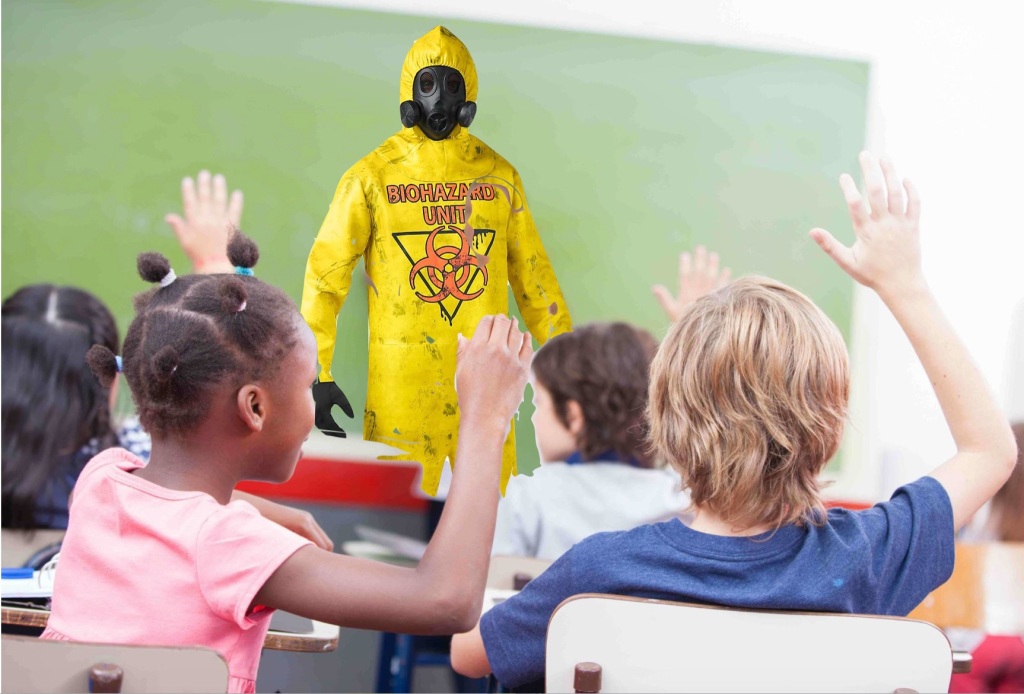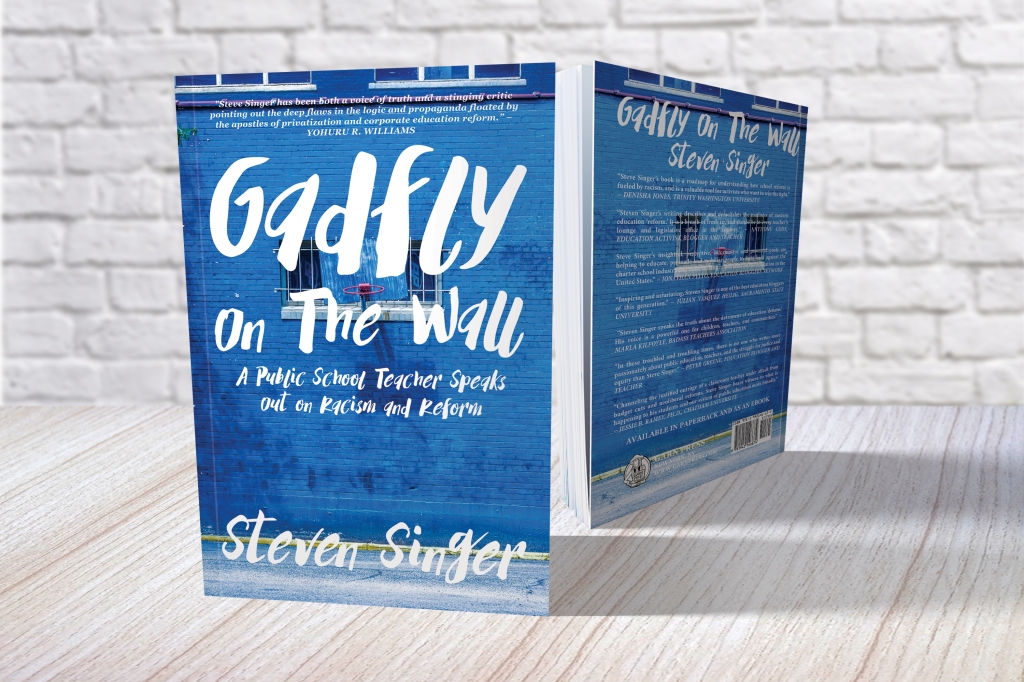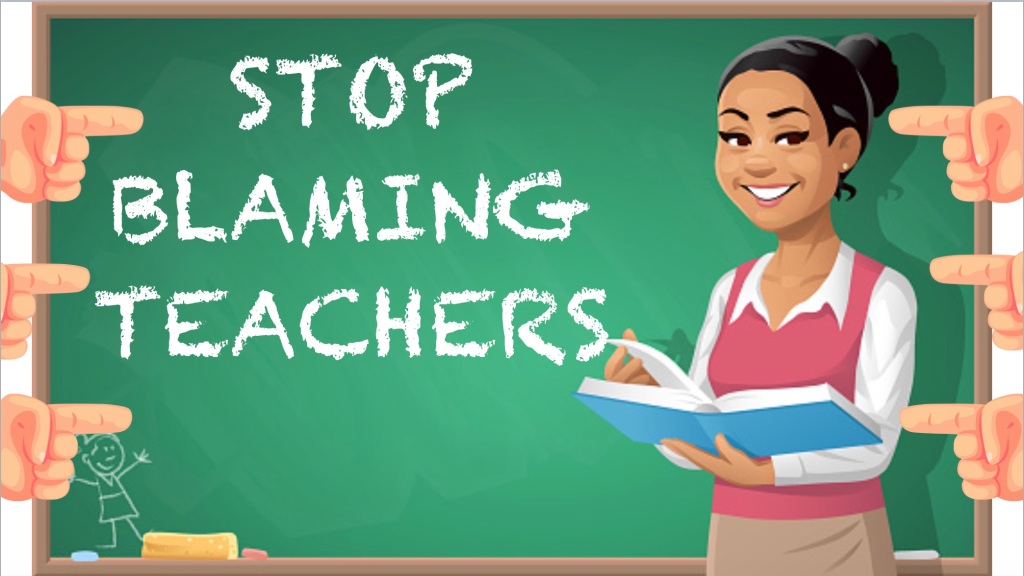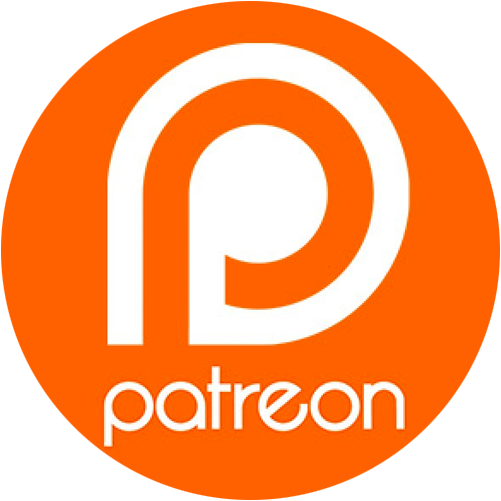
I couldn’t believe what was happening.
It was 8:30 am and nearly all of my students were in class.
Or technically none of them were.
It all depends on how you look at it.
This was a remote teaching day, after all, and the classROOM was empty somewhere across town.
My middle schoolers and I were all snug in our various homes communicating with each other via Zoom. But through the magic of the Internet, we were all together in one place and ready to get started.
It was surprising because on most days of in-person learning it takes at least 30 to 40 minutes in the morning for students to stumble in.
But today it just took a click of the mouse.
Not only that but we were awake, and chatting, and happy to be together!
“Hey, Rian! Nice to see you!” I said as I clicked in a student.
“Morning, Mr. Singer. Did you have a nice weekend?” she responded.
“You bet. You all staying warm out there?”
“Nah. I made a snowman with my little brothers. But it was fun.”
“I’m so excited!” another student offered. “My mom just had an ultrasound of her new baby. She says its nose looks just like mine.”
“That’s fantastic,” I said.
“Yeah. I’m going to be the oldest. There will be 12 years between us.”
Who were these children and what had they done with my students?
This is not what I had come to expect of students on-line.
Through the pandemic, the last two years of on-and-off remote learning were a slog. Most days getting students to respond verbally was like pulling teeth. They’d hide behind screensavers, their cameras off and for all I knew they could be on Mars.
Admittedly today the screensavers were still in place, but the ebullient chatter was like something you’d hear… well… in school!
In the physical classroom some of my kids might engage in this kind of banter. But not before 9 or 10 am!
My language arts students and I went over the homework and the kids even volunteered to read the directions and attempted the questions about prepositional phrases and appositives.
They wrote in depth answers to thematic questions about the book we’d been reading together, S.E. Hinton’s “The Outsiders.”
And then we discussed those questions together in a virtual Socratic Seminar.
These are all things I’d done before in previous years with remote students. But it never came off like today.
They put up hand raising emojis to indicate they wanted to speak and gave some of the most thoughtful comments I’d heard from them all year.
They talked about the main character, Ponyboy, and his responsibility to save some kids from a burning church. And others argued that he had no responsibility – it was the adults who should have watched the kids more closely. Or they argued that Ponyboy losing his life wouldn’t have helped the trapped kids any. Or they argued that it didn’t matter whether they saved the kids but whether they were willing to put more good into the world by trying…
I was astonished. We laughed. We pondered. It was a lot of fun.
How did this happen on-line?
I think it was a combination of several factors.
First, this was a high interest lesson of a high interest text.
Give kids something meaningful to do and they’ll exceed your expectations more often than not.
But even more than that – and this may come as a shock – I think they were actually grateful to be learning on remote.
That’s not to say they just naturally love the cyber school experience. But it’s been a scary few months in the school building.
We’d all watched in fear as COVID-19 spread through the district like wildfire.
All last week students and staff had steadily been going missing.
We got phone messages daily telling us how many people had tested positive but not who they were or how many additional folks had been quarantined because of close contacts.
Even several administrators and our building principal mysteriously vanished, and with them so did some of the secrecy.
One of my students was removed from class with an apparent positive test and the next day students were called to the office in ones and twos not to be seen again. Until the rooms were nearly empty.
On Friday, my last class of usually 20 had been whittled down to four.
And of those left was a child who sniffled and coughed complaining that his mom wouldn’t let him go anywhere after school until he had a negative COVID test.
So when they finally announced we were going to remote this week, the dominant feeling I had was relief.
I just wasn’t the only one.
No one wants to catch this thing.
You don’t know whether it’s going to manifest as a week-long cold, symptoms that last for months, a stay at the hospital or worse.
And don’t tell me kids aren’t affected. They may not often get as sick as adults, but they’ve seen the impact of this disease on others.
They know catching COVID is taking a chance.
That’s why most of them still wear face masks at school – even after the state Supreme Court overturned the Governor’s mask mandate. Even after school directors chose not to require masks on their own.
Policymakers roll the dice but it’s the rest of us who pay the tab.
I think my students were grateful that for once their safety and that of their families was being put first.
Or there just wasn’t enough staff available to keep the schools open. And not enough students left to teach in-person.
Don’t get me wrong. Today wasn’t perfect.
There were a few absent students – though much fewer than on any regular day.
There were a few who hid behind their screensavers – though less than those who checkout in the classroom.
Nor do I think remote learning is the best way to teach. Under normal circumstances, in-person is much more effective.
But these aren’t normal circumstances. And until cases come under control and we take adequate precautions to ensure everyone’s safety, they won’t be normal circumstances.
My students get that.
I hope their parents do, too.
I hope the administrators who’ve been out sick understand it.
Because they’re going to be back soon, and then it won’t just be a battle with COVID.
It will be a battle of egos, too.
Like this post? You might want to consider becoming a Patreon subscriber. This helps me continue to keep the blog going and get on with this difficult and challenging work.
Plus you get subscriber only extras!
Just CLICK HERE.

I’ve also written a book, “Gadfly on the Wall: A Public School Teacher Speaks Out on Racism and Reform,” now available from Garn Press. Ten percent of the proceeds go to the Badass Teachers Association. Check it out!



















